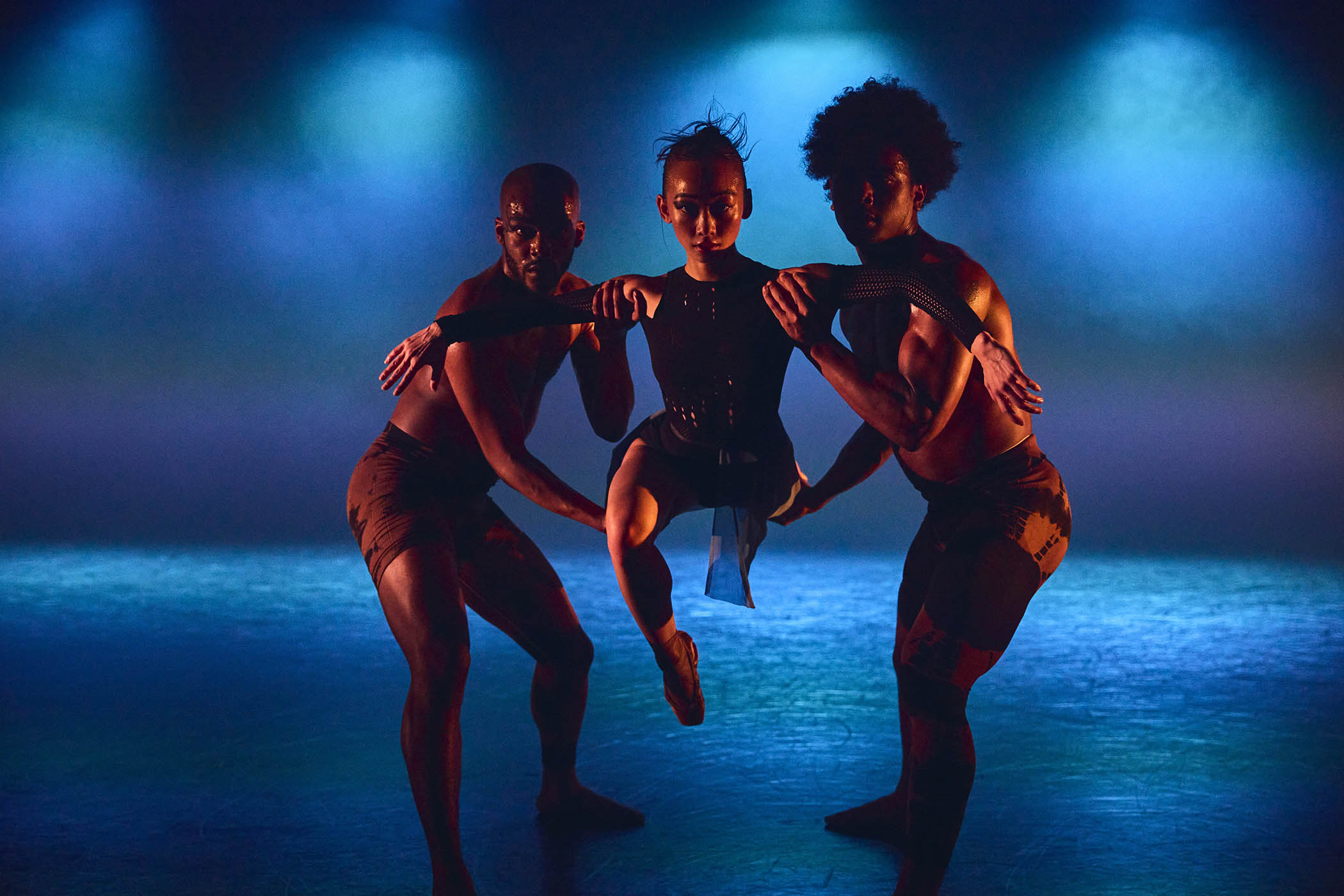How much to explain and how much to leave unsaid? It’s always an issue, especially when presenting new dance. The Black History Month edition of Draft Works at the Royal Opera House solved the dilemma by having a living programme in the form of Royal Ballet principal Marcelino Sambé. As curator of the evening, he invited each of the five Black female choreographers to explain their thinking about these fledgling works, some still in progress. These onstage chats created a generous atmosphere in which their creations could fly.
Most striking was the excerpt from Christ Alone by Elisabeth Mulenga, who trained at Rambert and has already won choreographic prizes. This exploration of her Pentecostal Christian upbringing, to a powerfully evocative soundtrack by Damsel Elysium full of scraping trombone and bells, features a prowling devil and an angel with a cello. It’s also full of original, redolent movements, gestures that tell a story without words: little scurries sideways from a devout churchgoer; charismatic swirls and turns when the spirit moves her.
Another Rambert (and Wayne McGregor) alumna, Hannah Joseph, produced Kaleidoscope of Time, a work shaped by the various contrasting extracts of music chosen into a series of elegant, thoughtful vignettes for some of the Royal Ballet’s best young dancers. Ballet Black’s Isabela Coracy offered Creatures, full of exploratory, tentative hand movements and muscular jumps, imagining a world seen from a non-human point of view.
Rebecca Myles Stewart’s In Ascendance was hampered by using Ave Maria as part of her score; even in Leontyne Price’s haunting interpretation it feels too familiar to let the choreography soar, yet Myles Stewart uses the fleeting entrances and exits of her dancers in interesting ways. Grey Picket Fence by Blue Makwana was advertised as a work in progress but already confidently swerves from a voiced score about the collapse of a marriage to dance that shows suppressed violence and sorrow through movement.
Meanwhile, Dance Umbrella, the annual festival of pioneering dance (to 31 October), began with Bogotá, a work of almost impenetrable intent from Andrea Peña & Artists. I’ve seen it twice now, and on second viewing a few more of its concerns with the state and heritage of Colombia, both political and spiritual, begin to emerge. Yet it remains opaque.
Unfolding more like an art exhibit than a dance work, it is full of staggering imagery, its dancers (half-naked for the first half, semi-dressed for the second) folding themselves into tableaux of agony that resemble paintings by Bosch. They drape themselves over scaffolding or pose with their mouths open in silent screams.
When the dance comes, it’s surprising and fluid: shaped leaps; little jumps on to one another’s backs; sliding, pulsing steps. At one point, two women attach themselves to each other and relentlessly drag each other around the stage. There is no clue to what any of it is about. A little help would have been gratefully received.
Photograph by Ian Hippolyte

